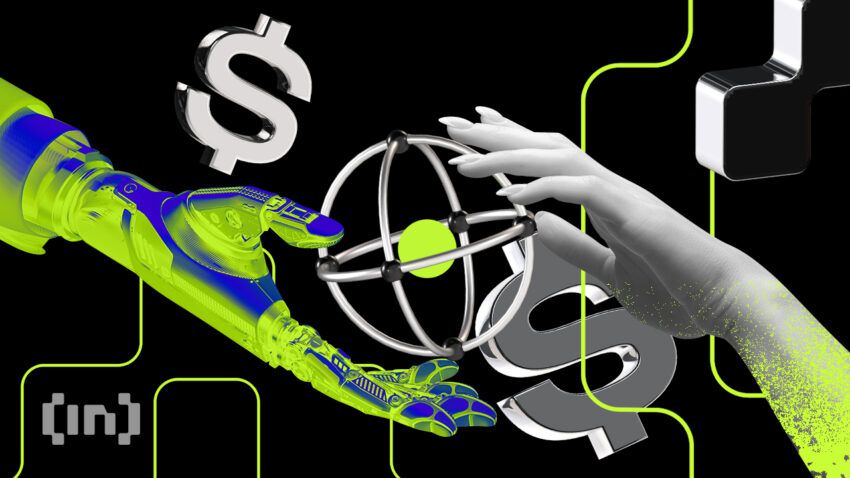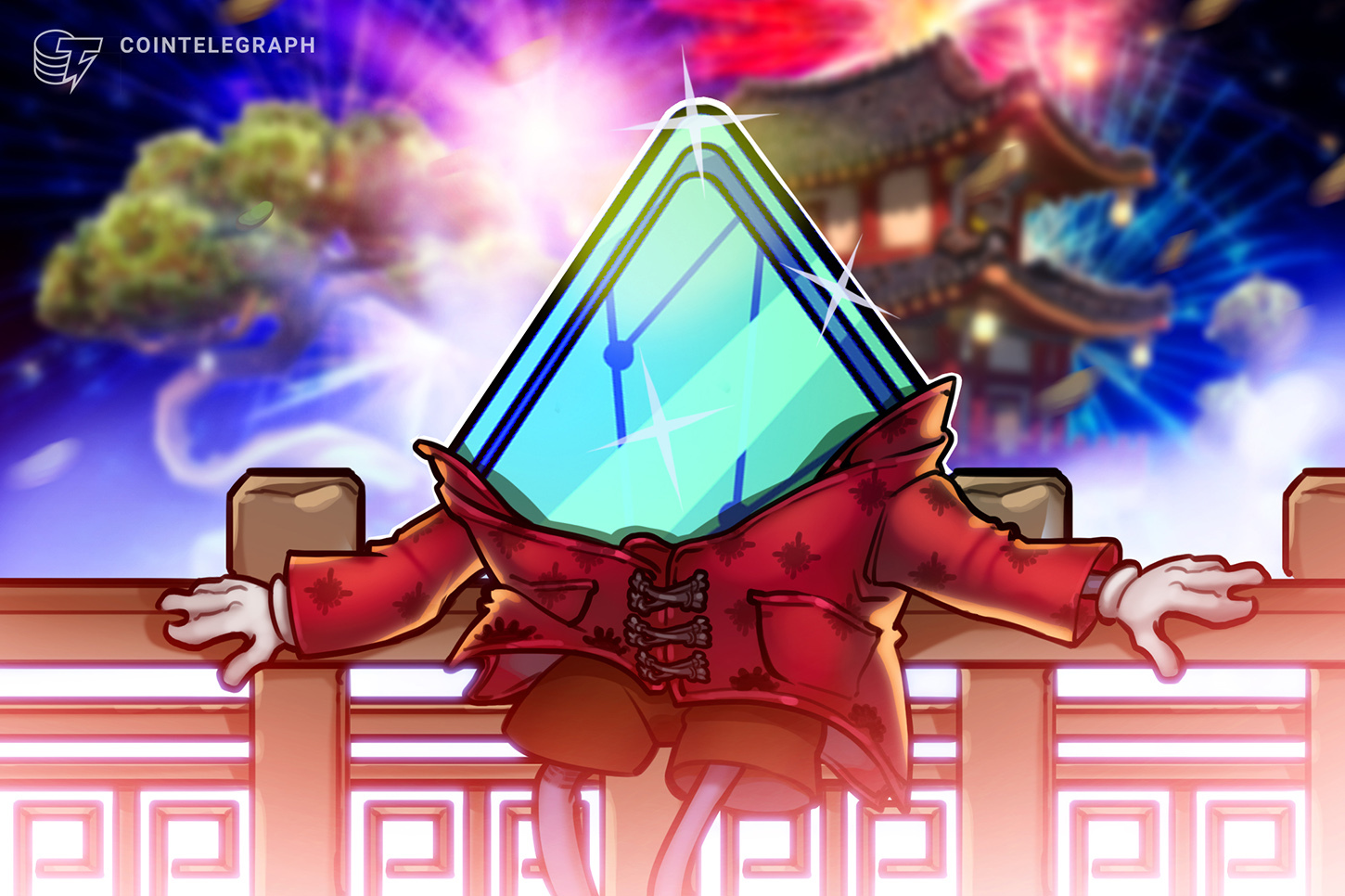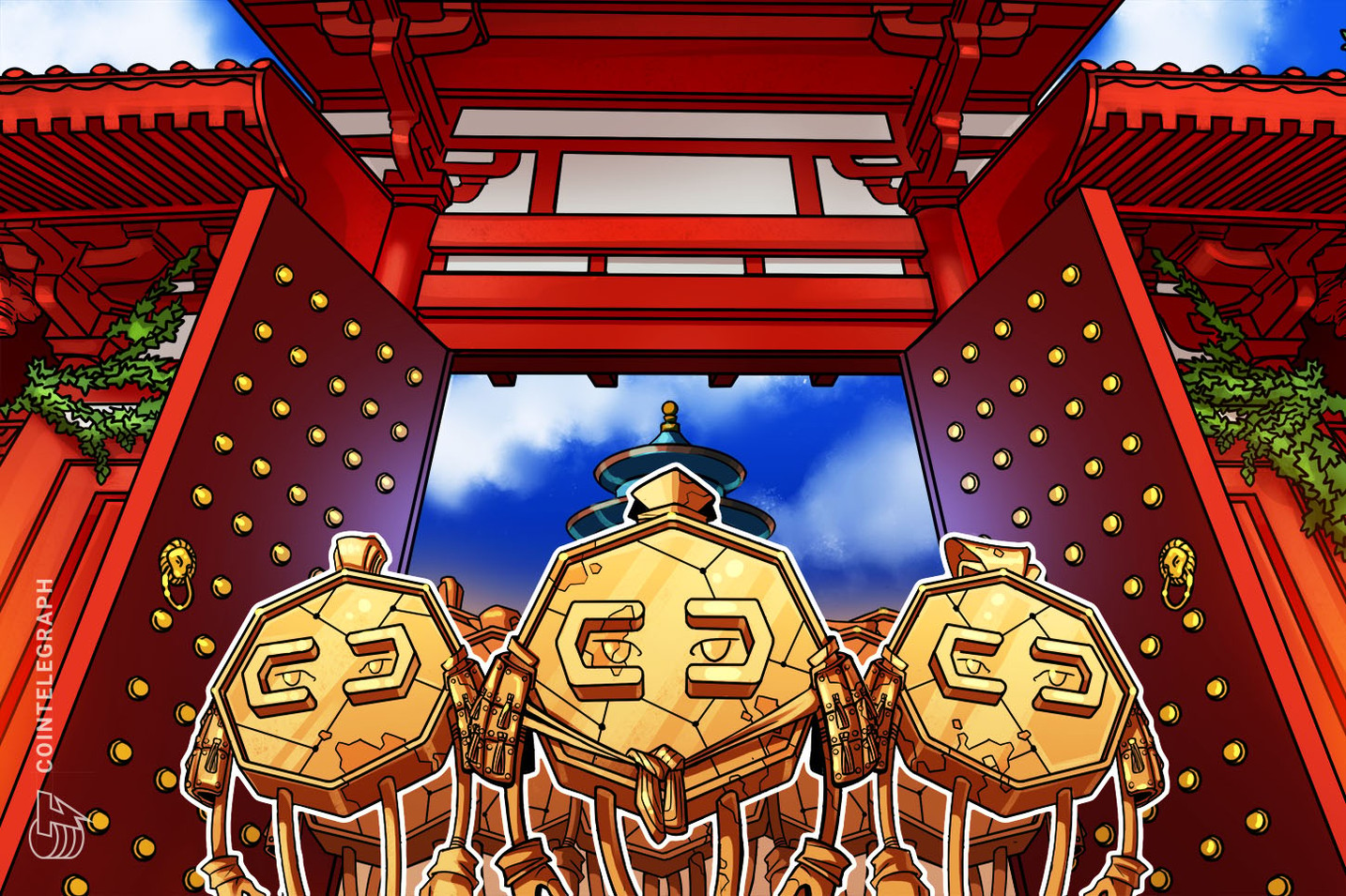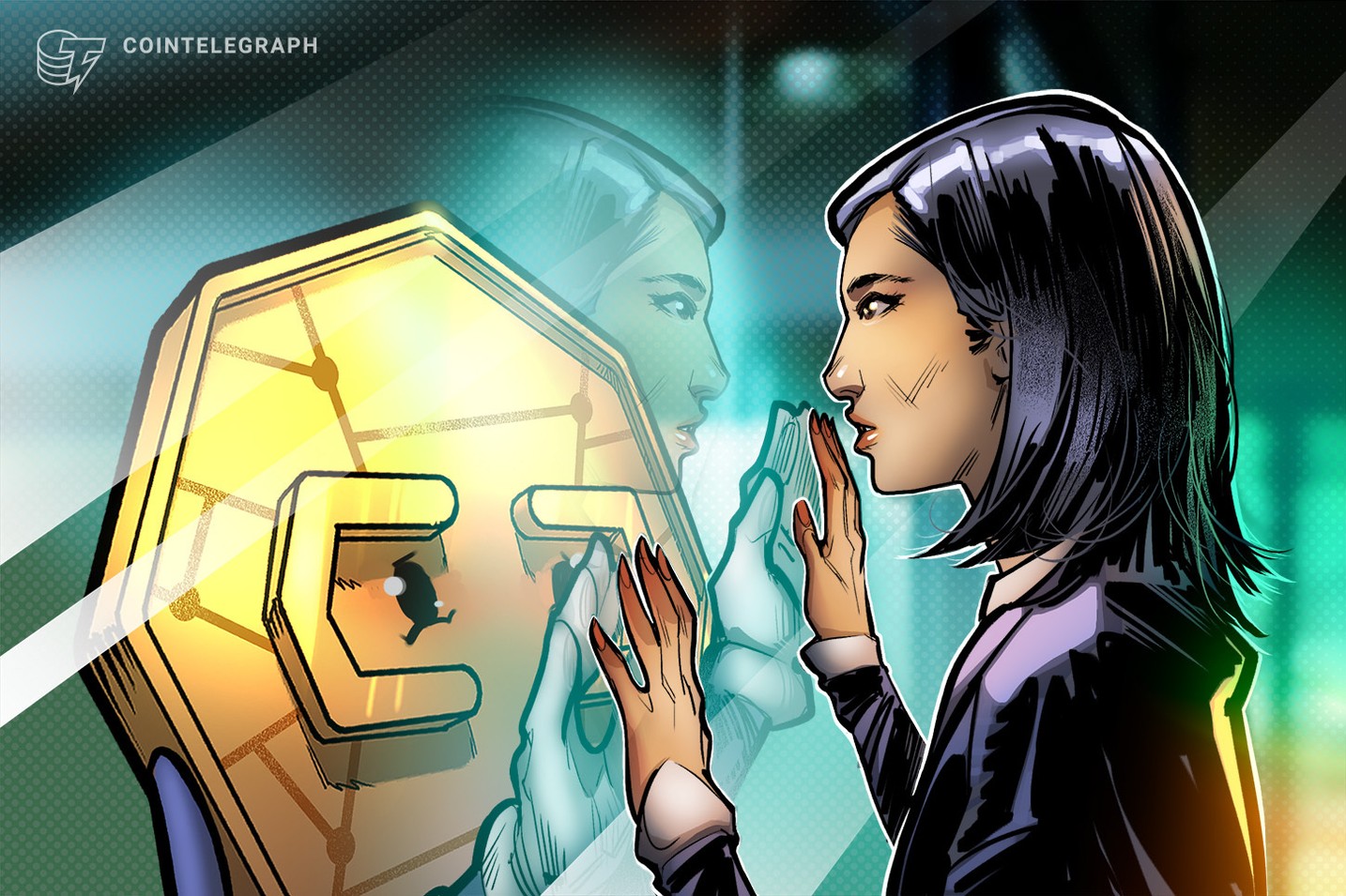Yao Qian is reportedly being investigated for “violations of discipline and law.”
Standard Chartered China Offering Exchange Services for Digital Yuan
PetroChina Completes First International Crude Oil Trade in Digital Yuan: Report
PetroChina bought 1 million barrels of crude oil settled in e-CNY at the Shanghai Petroleum and Natural Gas Exchange.
Digital yuan app adds prepaid Mastercard Visa top-ups for tourists

The e-CNY app now allows tourists to top-up their wallets using Mastercard and Visa payments with a “recharge first and use later” option.
China’s digital yuan nears $250B transaction volume: Central bank governor

While the adoption and use cases of China’s e-CNY are expanding, the digital yuan still only represents 0.16% of China’s monetary supply.
China to gain most from restrictive US crypto regulations: Coinbase CEO

The Coinbase CEO has been hugely critical of the U.S. failure to provide the crypto industry with regulatory clarity and has long argued it will push firms offshore.
BNP Paribas Will Link Digital Yuan to Bank Accounts for Promoting CBDC Use: Report
BNP Paribas’ corporate clients will be able to connect to China’s e-CNY through a connection to the Bank of China’s system.
US Senator Ted Cruz tries again with new bill to block CBDC

Ted Cruz said it is “more important than ever” to ensure the financial privacy of American citizens is preserved.
US lagging on CBDCs could spell ‘trouble’ — Crypto Council policy head

Fanusie doesn’t believe the Chinese-led CBDC movement on the global stage will replace the U.S. dollar, but it may cause a series of geopolitical headaches.
China doles out millions in digital yuan in bid to boost adoption: Report

Multiple Chinese city governments have given away millions worth of e-CNY to try to promote consumption around the holiday season.
China’s Hainan to boost NFT oversight as digital yuan trial ramps

Hainan’s market regulator wants to promote NFTs as part of the digital economy, but will actively work to weed out bad actors and speculative behavior.
China’s digital yuan gets smart contract functionality alongside new use cases

China’s central bank digital currency (CBDC) has seen new use cases in recent days, including buying securities and making offline payments.
Former Chinese central banker says digital yuan ‘usage has been low’

A former China central banker said cumulative e-CNY transactions only crossed $14 billion in two years, adding the results were “not ideal.”
Think tank launches ‘technical sandbox’ exploring United States CBDCs

The Digital Dollar Project’s Technical Sandbox Program is set to begin in October aiming to provide a clearer understanding of the ramifications of a United States CBDC.
China’s central bank to expand deployment of e-CNY

Over 4,567,000 merchants across the country now accept the e-CNY as payment.
City of Shenzhen airdrops 30M in free digital Yuan to stimulate consumer spending

The move comes as part of a government effort-led to revitalize consumer spending as a zero-COVID policy has devastated the countries’ economic hubs.
Digital yuan transactions beat out Visa at Winter Olympics venue: report

Many of the National Stadium retailers allowing purchases with China’s CBDC were outside the Olympics’ quarantine bubble for athletes, journalists, and staff.
Why Did China Ban Bitcoin Mining? Here Are The Seven Leading Theories
One of 2021’s biggest stories was the China ban on Bitcoin mining. On one hand, the news did affect Bitcoin’s price and gave ammunition to the naysayers that think that governments will outlaw Bitcoin. On the other, the network kept working without a hiccup, recovered its hashrate in record time, and gained in decentralization. However, a question remains. Why did China exclude itself from this very lucrative activity in which they were dominating?
As Bitcoin entrepreneur John Carvalho not-so-eloquently put it, “I refuse to believe that China is stupid.” There has to be a reason, even if it’s a simple one. To help our audience solve the puzzle, NewsBTC decided to gather all of our theories in a single post.
China Ban Theory #1: The Digital Yuan CBDC
This one is as straightforward as it gets. When China started cracking down on miners, NewsBTC reported: “As for the possible reasons, Bitcoin Magazine’s Lucas Nuzzi cites the upcoming Digital Yuan CBDC.” And Nuzzi said, “They’re literally rolling out their own coin (a CBDC) that will enable the mass surveillance and unbanking of dissidents.”
1/ The CCP officially banning #Bitcoin should come as no surprise.
They're literally rolling out their own coin (a CBDC) that will enable the mass surveillance and unbanking of dissidents.#Bitcoin is at complete odds with that. Dictatorships don't like freedom money.
— Lucas Nuzzi (@LucasNuzzi) June 21, 2021
So, did China kill a potential billion-dollar industry just to squash their CBDC’s competition? Is that it?
China Ban Theory #2: Blackouts
Is China having energy issues? In that same article, we posed another theory:
“In retrospect, we should’ve seen it coming. Only two months ago, following a suspicious blackout, NewsBTC reported:
According to the Beijing Economic and Information Bureau, there were concerns about the energy consumption related to these activities. PengPai quotes Yu Jianing, rotating Chairman of the Blockchain Special Committee of China, to claim that the country’s environmental requirements could lead to crypto mining being more “strictly regulated”. Jianing said this will be “inevitable.”
However, would they be decommissioning small hydropower stations if this was the case?
China Ban Theory #3: Cleaner Energy Sources
Our report on small hydropower stations’ source was government-regulated media, so take it with a grain of salt. It starts with a claim that clashes heavily with theory #2:
“According to the article, the heyday of private power plants in China was the beginning of the century. Investors built thousands of hydropower stations because they saw them as a constant cash cow. For their part, the regions nearby saw them as a sign of progress and a solution to their energy problems.
However, with the gradual surplus of electricity in China in recent years, the electricity generated by hydropower stations is often destined to being abandoned (commonly known as “abandonment of electricity”)”
Nevertheless, the main reason for the decommissioning seemed to be repairing the original flow of the rivers. “Hydropower stations have always been one of the important factors restricting the ecology of Sichuan’s rivers,” said Wang Hua, deputy director of the Sichuan Provincial Water Resources Department. We went a step further:
“It’s possible that the government is trying to get rid of those plants. That would explain the article’s tone, it seems like it was trying to get investors to stay away from those hydropower stations. In light of this, China’s ban on Bitcoin mining could just be part of an even bigger play. They’re serious and methodically shaking things up over there.
What could be their end-game? Is China just trying to go carbon neutral and repair the original flow of the rivers? Or is there something else at play here?”
However, something doesn’t add up. In another article about the ban, we highlighted that hydropower energy is clean energy.
“Did China make the mistake of a lifetime by banning Bitcoin mining or do they have a secret plan?
The fact that the electricity for crypto mining in Sichuan came from clean hydropower meant that many thought the province would be a safe haven for Bitcoin miners.”
China Ban Theory #4: The New China Model
We explored Bloomberg’s theory about a “less founder-driven and more China-centric” model that China was supposedly exploring.
“If China is abandoning the Silicon Valley model, what will it replace it with? Insiders suggest it will be less founder-driven and more China-centric.
Why is China dwarfing its biggest industries and players? Is the “China Model” just concerned with scale? Or is control their focus? Are they cracking down on people and companies with too much power that work on a global scale?”
And even though it wasn’t quite believable, it introduced the concept that China was also cracking down on their biggest tech executives. Maybe this isn’t only about Bitcoin?
BTC price chart for 01/02/2022 on Bitrex | Source: BTC/USD on TradingView.com
China Ban Theory #5: Making Bitcoin Hard To Use
This one doesn’t explain the overarching theme of the China ban. It does add color to whatever theory you prefer, though. In an event, Yin Youping, Deputy Director of the Financial Consumer Rights Protection Bureau of the People’s Bank of China, said, “We remind the people once again that virtual currencies such as Bitcoin are not legal tender and have no actual value support.” And proceeded to list everything the PBOC was doing to combat cryptocurrency trading.
In the NewsBTC report about it, we said:
“Maybe their plan is simpler than we thought. It’s possible that The People’s Bank of China is just going to make it really really hard for the common citizen to access Bitcoin. And, China’ll use propaganda and repetition to keep people in check and scared of the unknown. One of Bitcoin’s prototipical adversarial scenarios. A battle that Bitcoin expected sooner or later.”
China Ban Theory #6: Preparing For Evergrande’s Default
Was the Chinese government just closing the exits? They knew that the Evergrande situation was inevitable and didn’t want people to have the Bitcoin lifeboat available. In our report, we said:
“To recap: the government saw this coming from a distance. They knew the crisis was going to repeatedly hit the country and banned Bitcoin mining to scare the population into not buying the hardest asset ever created. Bitcoin, the true hedge against the collapse of every economy.”
China Ban Theory #7: FUD To Get More Bitcoin
According to John Carvalho’s wild and full of assumptions theory, China bans something related to Bitcoin every cycle to manipulate the price and get more BTC. The country has no incentive to ban the industry. They make too much money mining, plus they control the ASICs manufacturers, plus mining machines inflate the value of chips, and they control that business too. So, Carvalho’s theory is:
“The main ASIC manufacturer, the Chinese company Bitmain, had a new generation of miners ready. So, the CCP “decided to create a demand for the aftermaket and combine it with the FUD.” As they usually do, they sold their Bitcoin and made their shorts. Then, China banned Bitcoin mining and the whole country turned off the ASICs. The world perceived the ban as real, just “look at the hashrate.” This is the first time this happens. Then, China sold a small portion of its ASICs to the USA.”
According to him, Bitcoin mining in China didn’t stop, they’re just not signing the blocks. Of course, he doesn’t have any proof, and neither do we. This is just a theory, like all the others.
What’s really going on in China? What’s the reason behind the great China ban of 2021? We wouldn’t know for sure, but we have many suspicions. Let’s hope 2022 gives us solid evidence, new insights, or, at least, a plausible explanation.
Featured Image by PublicDomainPictures on Pixabay | Charts by TradingView
The People’s Bank Of China’s Report On Blockchain Tech And Their Upcoming CBDC
Apparently, the People’s Bank Of China is considering using blockchain technology to power the Digital Yuan CBDC. The coin, also known as Digital renminbi or digital RMB, has been in beta-testing for a while now. However, Di Gang, deputy director of the Digital Currency Institute of the People’s Bank of China, recently presented an extensive report on blockchain technology. It was at “the 18th annual global meeting of the International Finance Forum (IFF) on Dec. 5,” and Chinese journalist Colin Wu translated the main points for us to analyze.
Related Reading | How Samsung Will Help The Bank Of Korea With CBDC Development
Before we do that, let’s consider this. Their CBDC is a completely centralized affair. Why would the People’s Bank Of China use a blockchain? In other words, why would China need a blockchain for its CBDC if its aim is not decentralization or censorship resistance? A centralized database is orders of magnitude more efficient than a blockchain. And it doesn’t need mining to validate transactions, nor PoW or PoS to reach consensus. Let’s dive into the report and see if we can find answers to these questions.
What Does The People’s Bank Of China Think About Blockchain Tech?
The report begins with stats and a survey’s results:
“According to Di Gang, 2021, the results of blockchain research conducted by relevant consulting organizations for ten countries, including the United States, the United Kingdom, Singapore, Germany, China and Japan, show that 81% of the institutions surveyed believe that blockchain technology is widely scalable and is being adopted by the mainstream, with the percentage of financial institutions agreeing with it being as high as 84%, and all the global financial institutions surveyed have made blockchain an an imperative strategic priority.”
Notice that they talk about belief and about making blockchain a priority, but not about actual usage among traditional financial institutions. The report does go on to say that “A research institute in September 2021, research on the use of blockchain by the global TOP 100 listed institutions shows that 81 institutions are using blockchain technology,” but no source is given. Where are those projects? Are they still in development?
Then, Di Gang claims:
“Blockchain landing achievements are increasing and playing more and more value advantages; on the other hand, blockchain technology has realized landing in cross-border payment, supply chain finance, agricultural finance, trade finance, inclusive finance, social city, “three rural areas”, people’s livelihood, etc.”
Are these crypto-projects, government-related, or traditional finance projects? The report doesn’t specify, so we can’t know their characteristics. Then, Di Gang says “Some large international financial institutions are also actively expanding blockchain application scenarios, including trade finance, information sharing, foreign exchange trading, equity trading, etc.” Why do those institutions need a blockchain to do all that?
Does The Digital RMB Or Digital Yuan Need a Blockchain?
Apparently, it does. And the Numerical Research Institute is already working on an implementation:
“First, a unified distributed ledger was built in the digital RMB system based on blockchain technology. The central bank acts as a trusted institution to upload the transaction data onto the chain to guarantee the authenticity and reliability of the data, and the operating institutions can conduct cross-institutional reconciliation, collective maintenance of the ledger, multi-point backup, etc.”
The Institute wants to build a “blockchain platform for trade finance, with the goal of penetratable information, transferable trust and shareable credit, and to complete the construction of a blockchain-based trade finance ecosystem.”
Relationship betwwen the US Dollar and the Chinese Yuan via FXCM | Source: USD/CNH on TradingView.com
Technical Challenges In Blockchain Technology
The People’s Bank Of China identified the following difficulties with blockchain technology:
- Problems with performance and scalability.
- Not Enough privacy protection. “Innovation from the theoretical level is still needed, as well as from engineering technology,” Di Gang said.
- It needs to “further strengthen security technology innovation.”
- “In terms of regulatory auditing, Di Gang believes that there are still many nodes inside the blockchain that are anonymized and dense, which are difficult to supervise by decentralization.”
- There’s technical friction between blockchain technology and traditional technologies.
- Someone needs to build an interoperability standard system.
So, essentially the same problems every crypto company already identified plus one, “regulatory auditing” which is “difficult to supervise by decentralization.” Is it fair to say that this is what this report is really about?
Related Reading | Central Bank of France Tests Blockchain-Backed CBDC Targeting Debt Market
The People’s Bank Of China Will Release Their CBDC For The Winter Olympic Games
Apparently, the PBOC’s plan to further test the Digital RMB during the Winter Olympic Games is still a go. Di Gang said:
“The digital RMB has been piloted since the end of 2019 and is now being piloted in 10 regions and the 2022 Beijing Winter Olympic Games scenario, and in July this year, the PBoC released the White Paper on the Progress of R&D of China’s Digital RMB, and as an important part of the digital RMB R&D pilot and the Winter Olympic Games preparation, the pilot of the digital RMB Beijing Winter Olympic Games scenario is also is advancing in a steady and orderly manner.”
And that’s where China currently stands regarding blockchain technology and their CBDC.
Featured Image: glaborde7 on Pixabay | Charts by TradingView
PBoC governor says digital yuan to be more privacy-enhanced than payment apps

Making the e-CNY more privacy-orientated aside, the PBoC already has ambitions to bring the CBDC onto the world stage.




